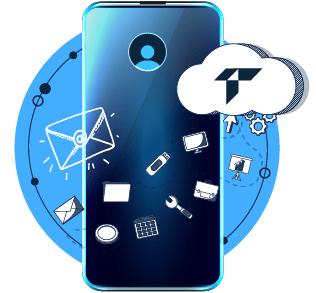Why should you choose us?
Identity Resolution is the solution.
We help you to build your First-Party ID Graph across all touchpoints. This is the basis for:

Increased conversion rates.

A more efficient use of your media budget.

Improved advertising effectiveness
measurement (attribution).

Close the gaps
in your customer experiences:
of users on own media even when they are not logged in.

Example: Behavioural e-mail trigger campaigns compared to batch campaigns:
| Open Rate & Click Rate | Sales per E-mail |
Open Rate & Click Rate Open Rate +102.6% Click to Open Rate +147.9% |
Sales per E-mail Conversions +51% |
in the open internet even when third-party cookies are no longer available.
your behavioural retargeting campaigns
in walled gardens.

Example:
Customer Match
Rates On:
+70%
Increase the revenue per customer
(customer lifetime value)
of each digitally identified customer.

Our Platform
360°
Customer view

Identity Resolution
Enables the digital identification of prospects and customers across all touchpoints.


360°
Customer view

Customer
Engagement
Enables a 360° view of your customers and activates data, segments and campaigns in all your marketing channels.


Consent Management
Ensures that all customer communication and processing of customer data is only in compliance with data protection.
Free consultation
Book an appointment
with one of our growth consultants:
- To find out how many customer
and prospects you could digitally
identify. - To discover the benefits of
personalisation, media efficiency
and attribution.

Become an Identity Resolution expert!
Do you want to know everything about Identity Resolution?
With Teavaro Academy’s free E-learning courses you will discover…
- The importance, benefits, and challenges of Identity Resolution.
- Different approaches to creating a first-party ID Graph.
- How data protection laws and industry privacy initiatives affect Identity Resolution.
- How Identity Resolution helps you with personalisation, media mix optimisation and attribution.
The latest material on Identity Resolution.
Achieving Measurable Results with a Data-Driven Marketing Strategy.

Omnichannel Marketing: An Approach to a Consistent Customer Experience.

Web Analytics: How you can power Google Analytics 4 with your own ID Graph (GA4)
In this E-Book we will show you a step by step guide how you can get additional benefits from Google Analytics (GA4) based on your own ID Graph.

Become an expert in Identity Resolution downloading this form:
Stay tuned with our monthly news.
Do not miss what is happening in the market:



















